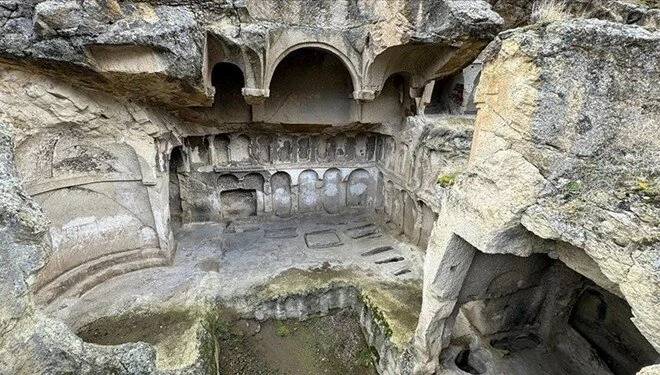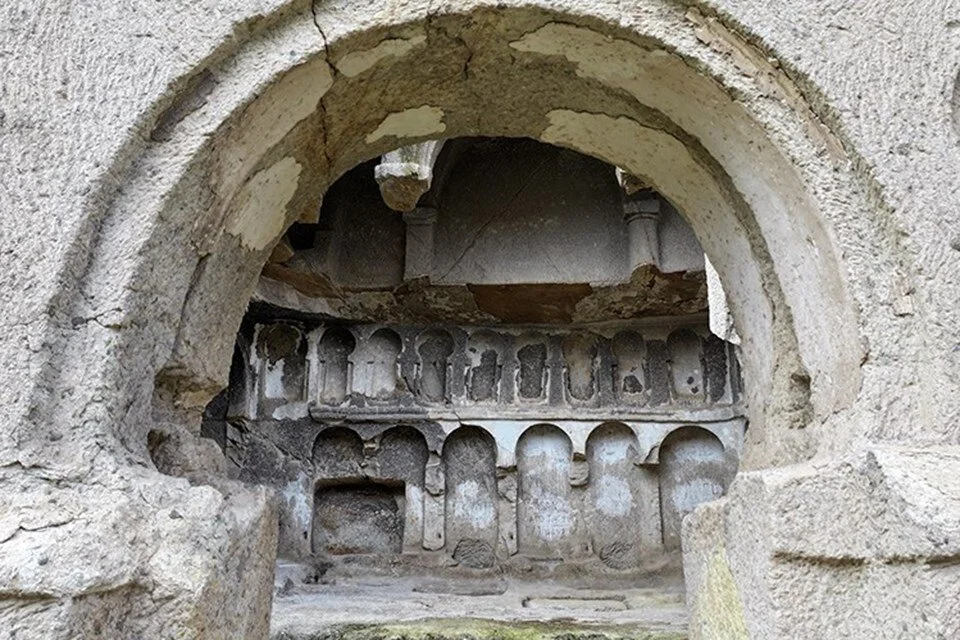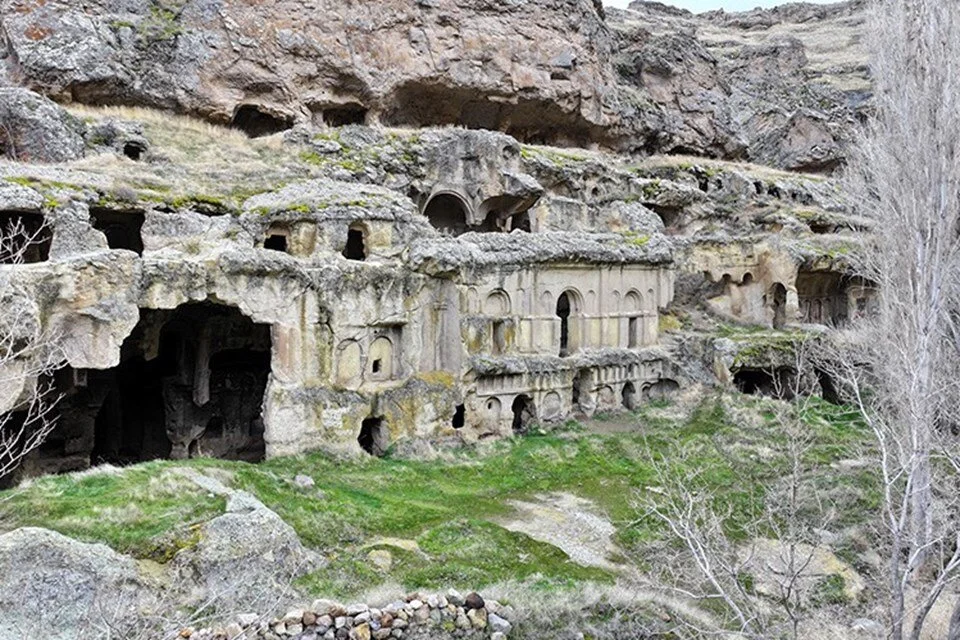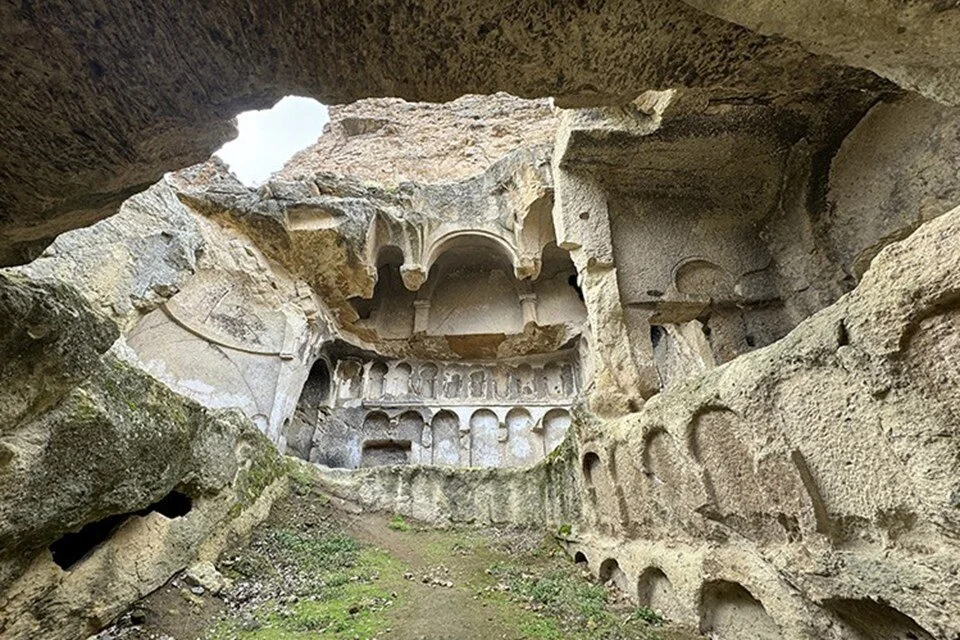
1000-year-old churches carved into rock in Erdemli Valley opened to visitors
Erdemli Valley with 1000-year-old rock churches and structures in Yeşilhisar district of Kayseri was opened to visitors.
The canyon in the Erdemli Valley was formed as a result of the flow of lava and erosion by rivers when Mount Erciyes was an active volcano.
The valley is about 70 kilometers from Kayseri city center.

The Erdemli Valley at the foot of Mount Erciyes is about 10 kilometers long. It is remarkable for its steep cliffs, lush vegetation and historical churches. The churches in the valley were built between the 10th and 13th centuries and are among the important examples of Byzantine art.
Among the prominent buildings are the Palace Monastery Church, St. Eustathios Church, St. Nicholas Church and Chapel, St. Michael Church, Twelve Apostles Church, Forty Martyrs Church, Single Nave Church and Bear Church.
Erdemli Valley has been an important religious center for Christians throughout history. The churches and monasteries in the valley were once home to a busy monk life.

Thought to have been used in the 10th and 13th centuries, the walls of the buildings in the valley feature scenes from the Bible and the Torah, some floral and geometric decorations, and single figures such as saints, saints, bishops and apostles.
The churches were built using the most important techniques of the period.
Yeşilhisar District Governor Ahmet Ali Altıntaş said that Erdemli Valley is located in the middle of wide plains where agriculture was intensively practiced during the Byzantine period and in previous years.
Explaining that wealthy people lived here since the 10th century, Altıntaş said, “We can understand this from the techniques and workmanship used in the structures in the region. They were built by craftsmen known to have come from Istanbul, using the most important techniques of the period.”

Altıntaş pointed out that there are many documents indicating that life in the Erdemli Valley was mostly shaped by the management of the agricultural business in the region and the marketing of the products.
Stating that this region differs from many other living areas built in the same period with its economy based on agriculture, Altıntaş said, “Just south of this region, places where agricultural workers could stay and warehouses where they could store products were built. These show us how intense the agricultural traffic in the region was.”
Cover Photo: AA
You may also like
- A 1700-year-old statue of Pan unearthed during the excavations at Polyeuktos in İstanbul
- The granary was found in the ancient city of Sebaste, founded by the first Roman emperor Augustus
- Donalar Kale Kapı Rock Tomb or Donalar Rock Tomb
- Theater emerges as works continue in ancient city of Perinthos
- Urartian King Argishti’s bronze shield revealed the name of an unknown country
- The religious center of Lycia, the ancient city of Letoon
- Who were the Luwians?
- A new study brings a fresh perspective on the Anatolian origin of the Indo-European languages
- Perhaps the oldest thermal treatment center in the world, which has been in continuous use for 2000 years -Basilica Therma Roman Bath or King’s Daughter-
- The largest synagogue of the ancient world, located in the ancient city of Sardis, is being restored











Leave a Reply